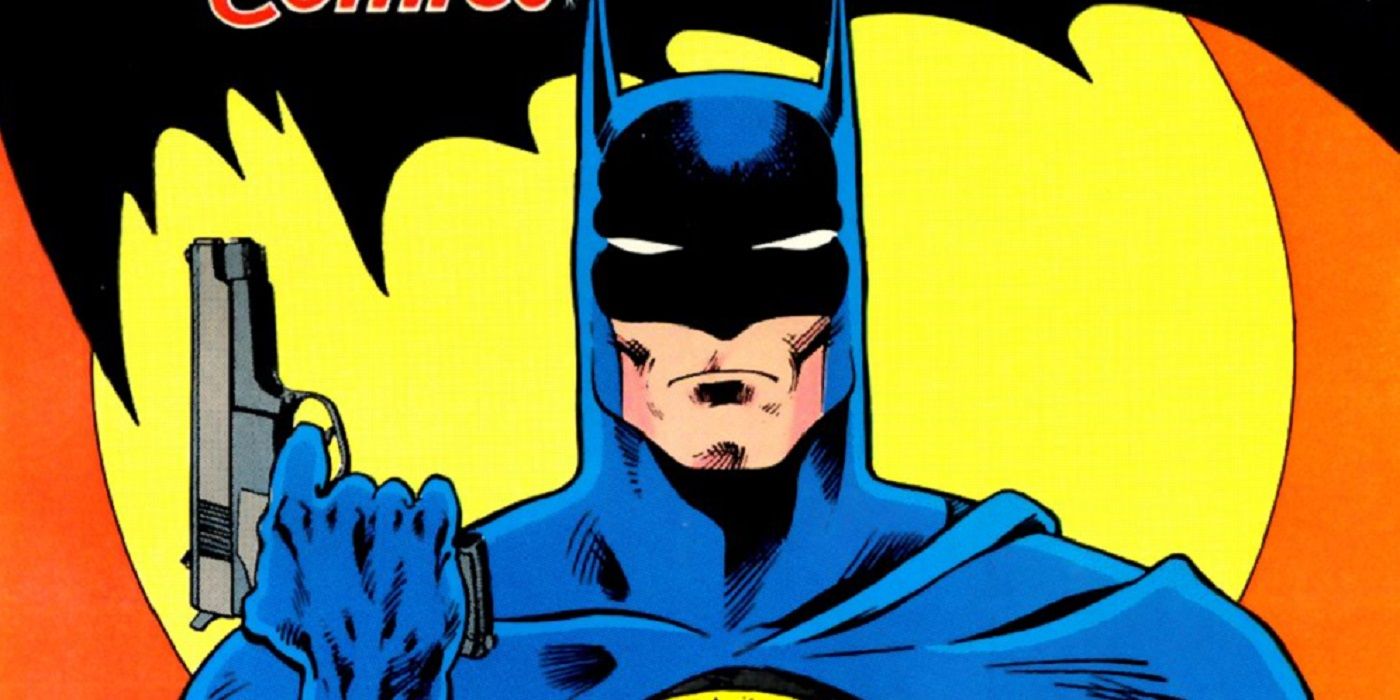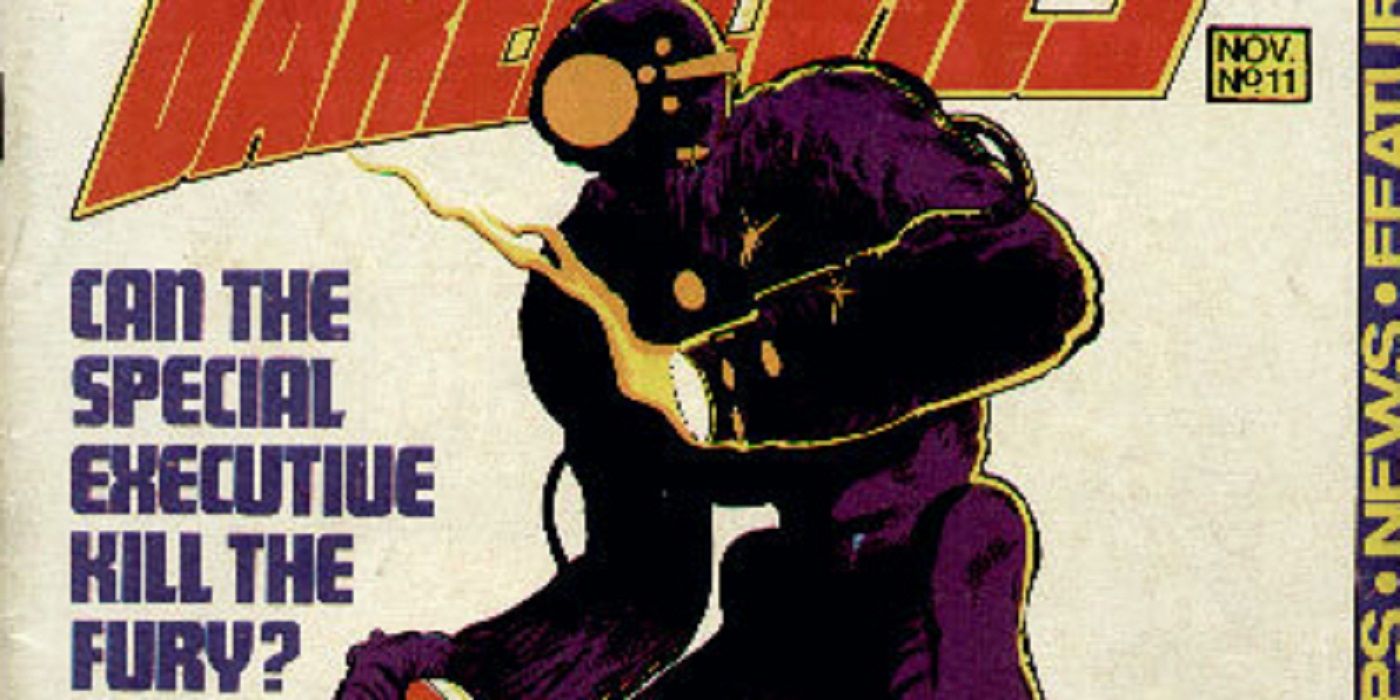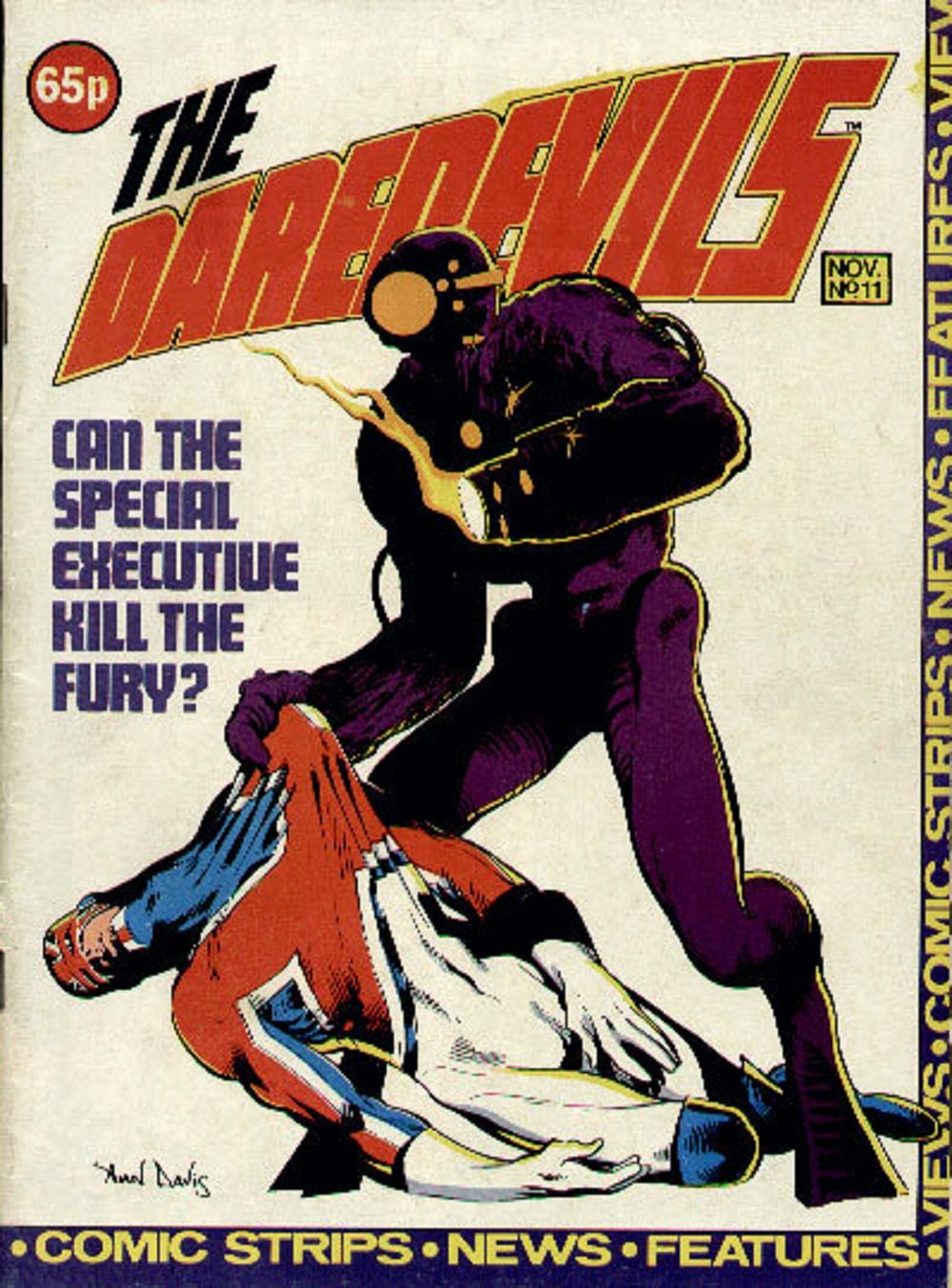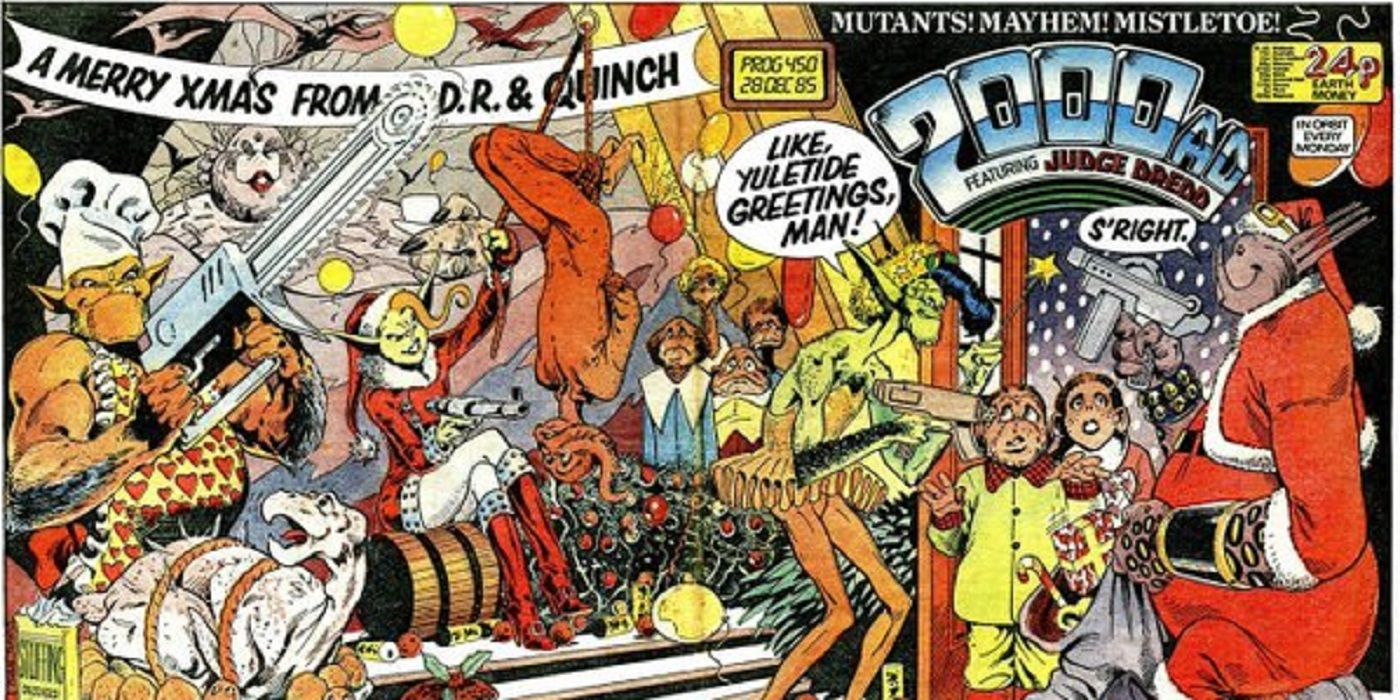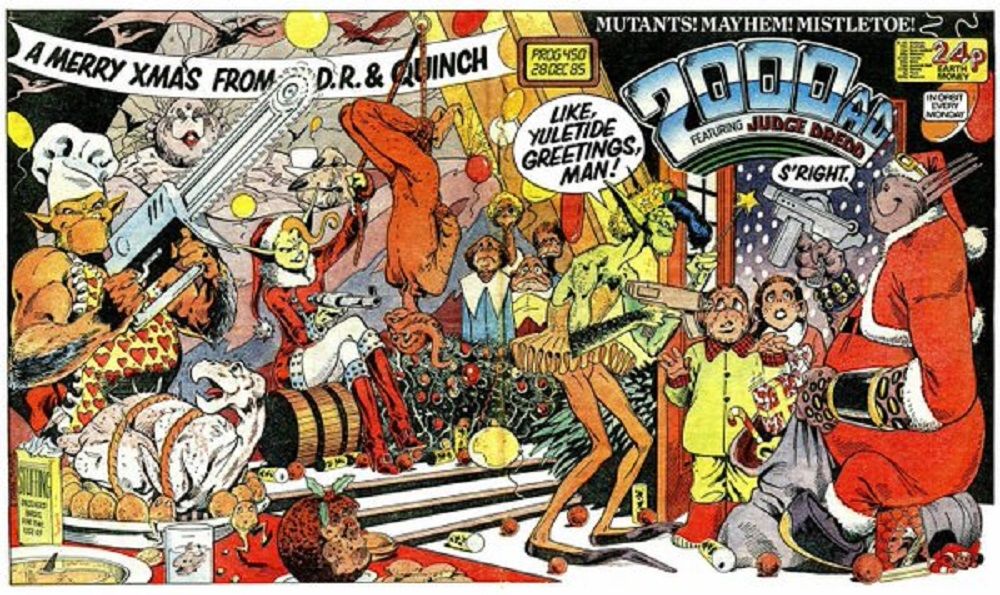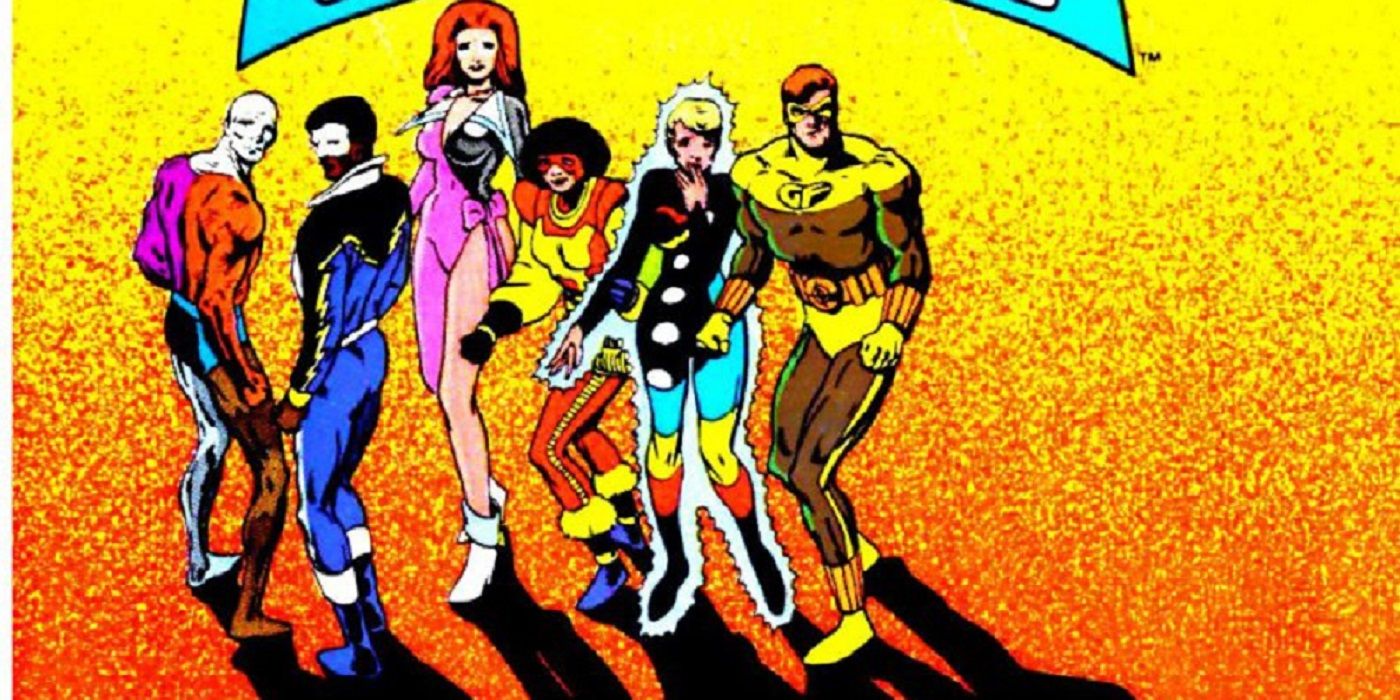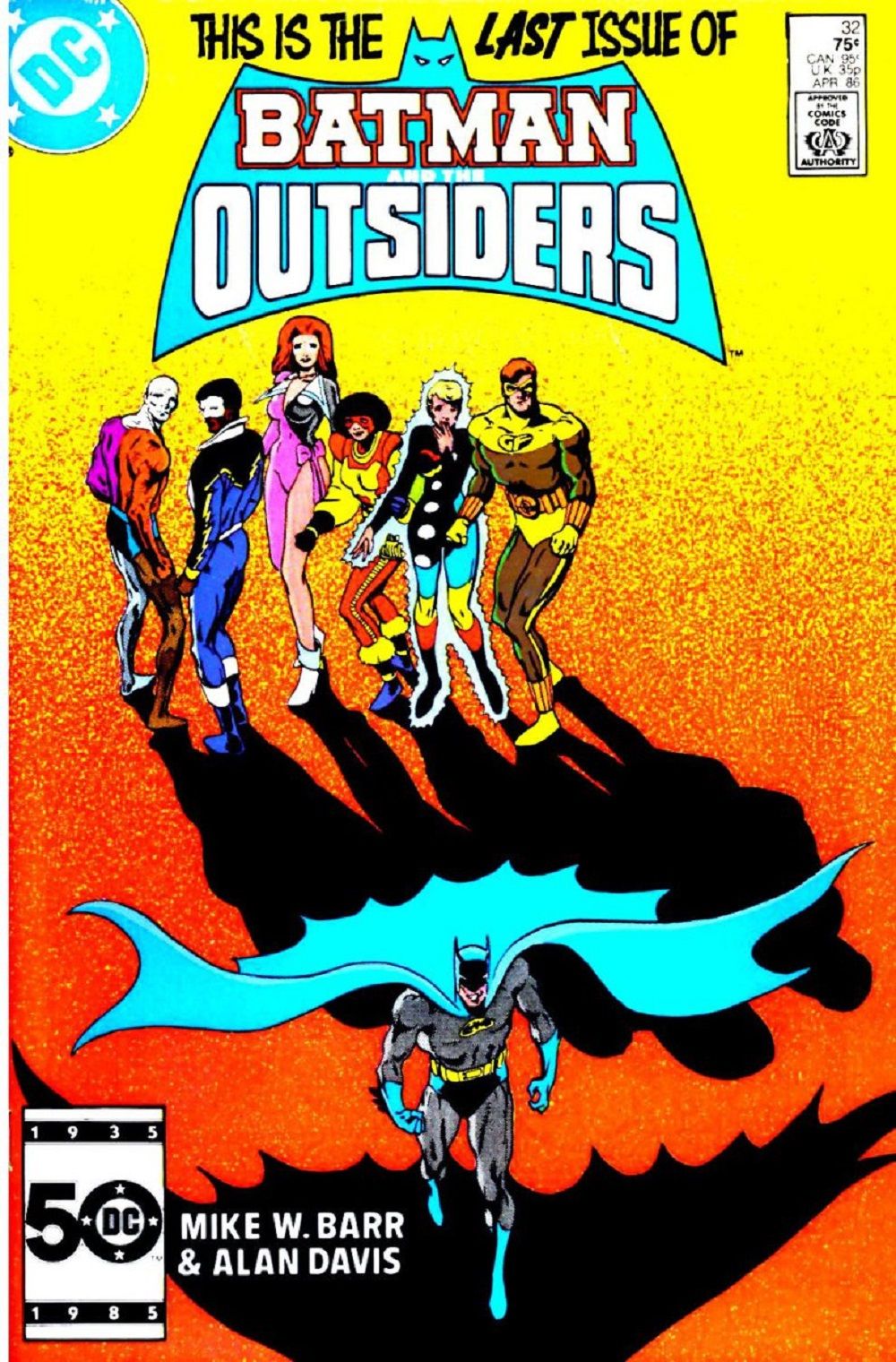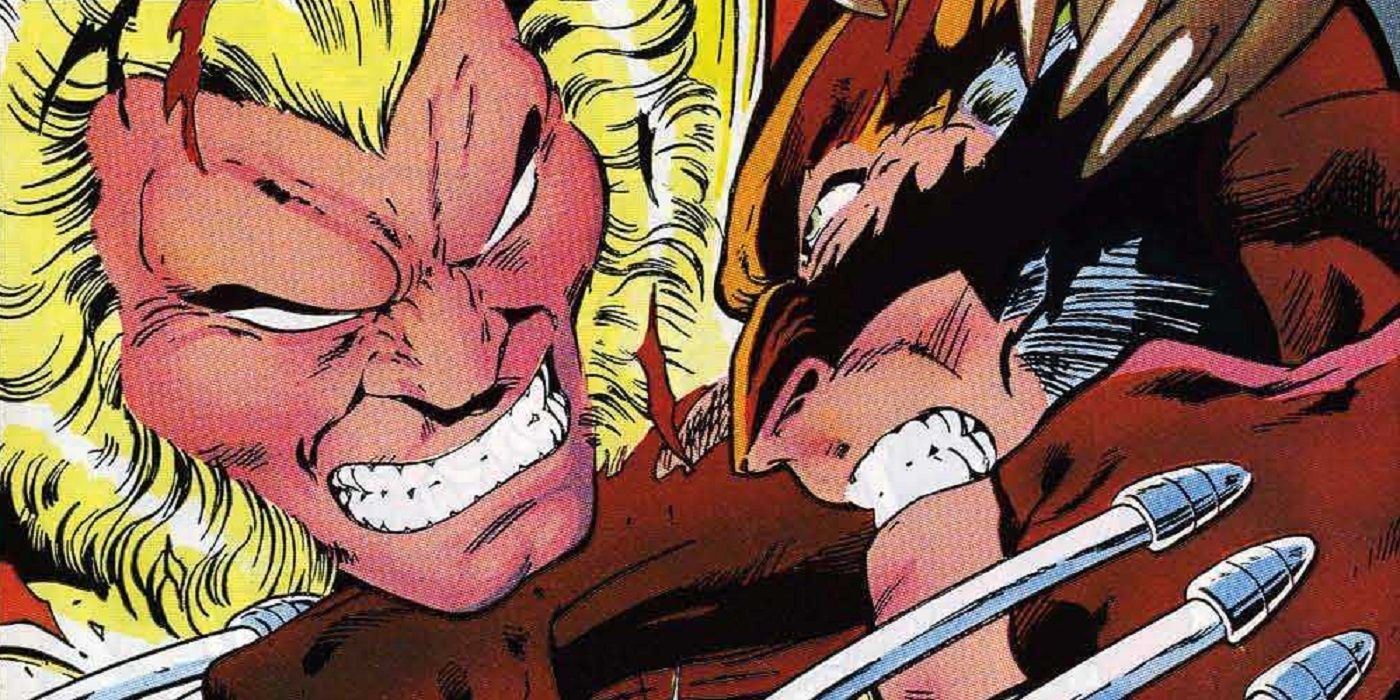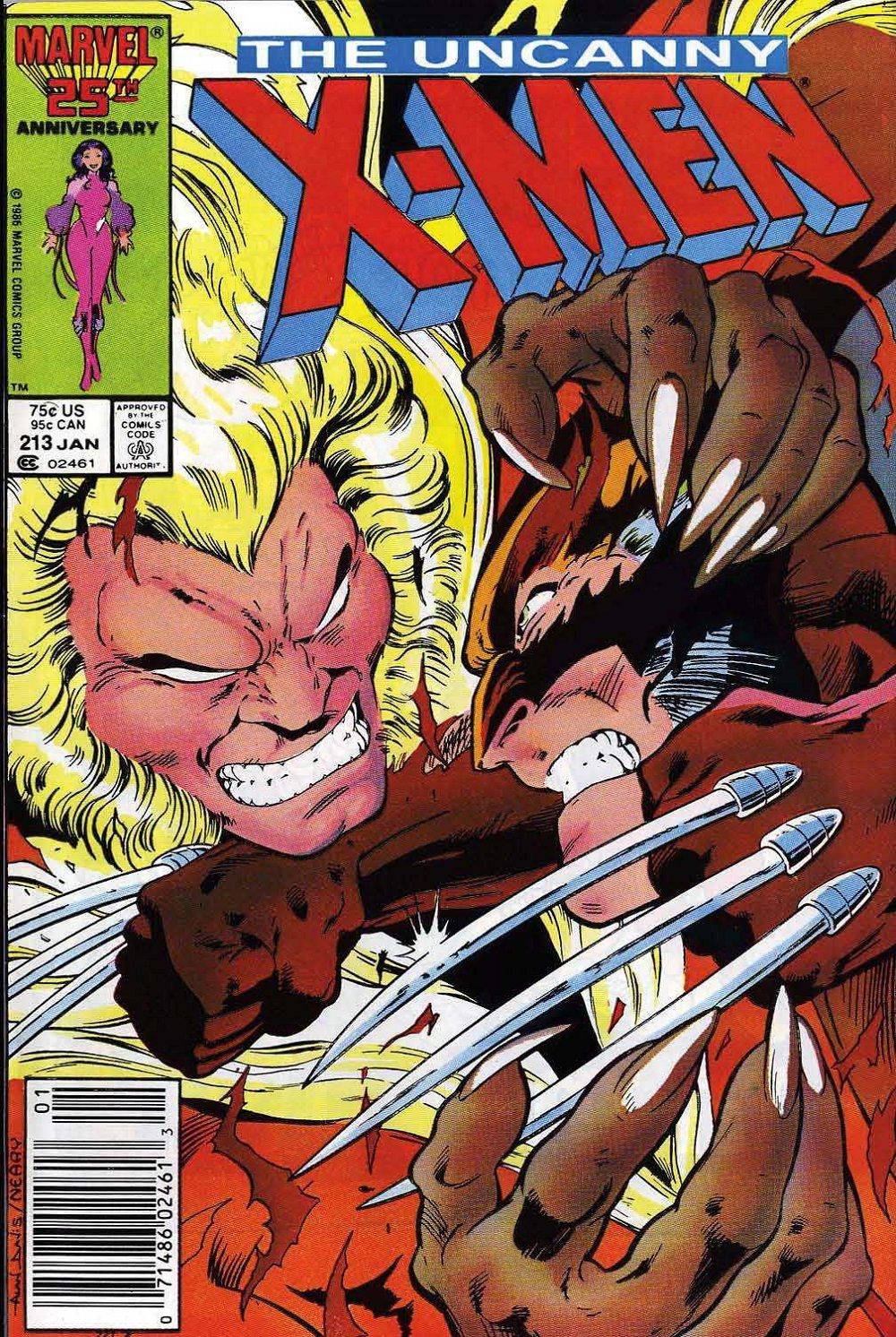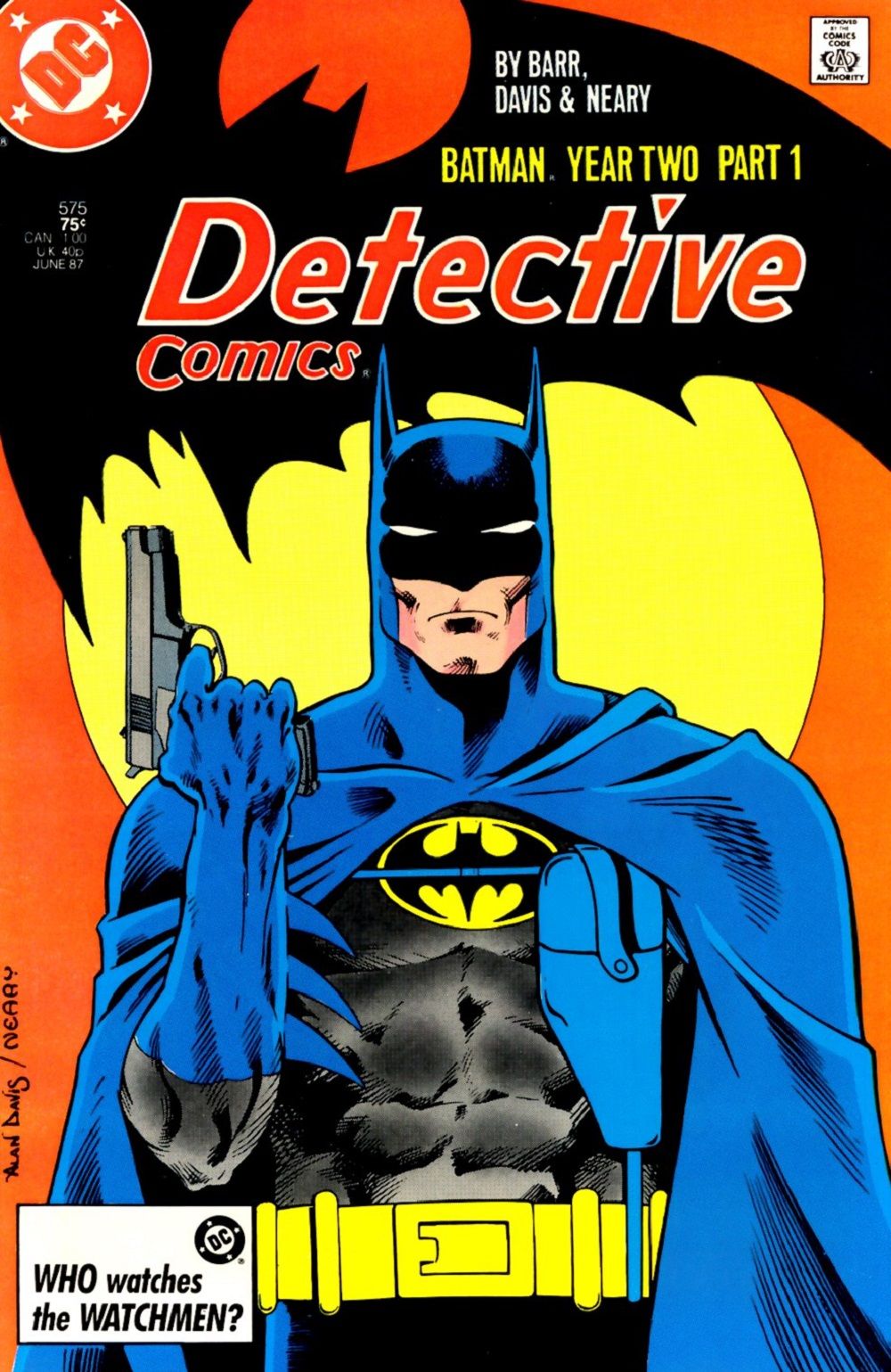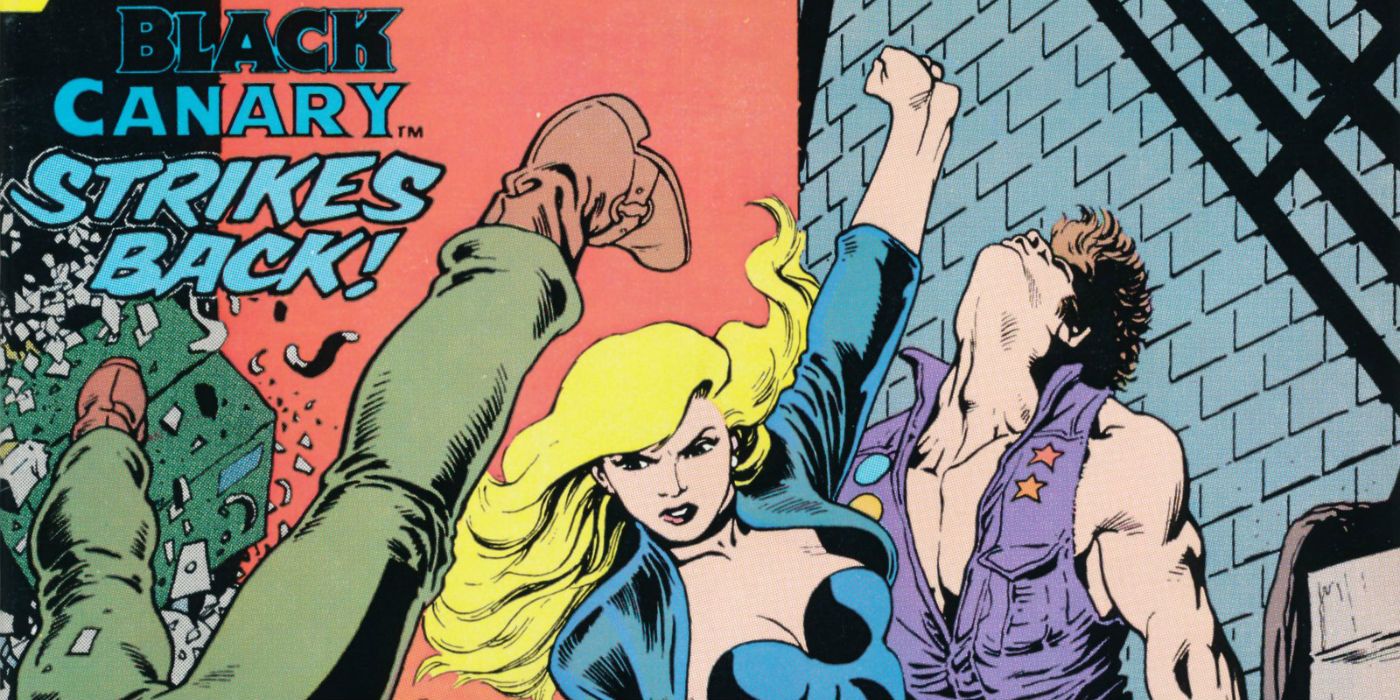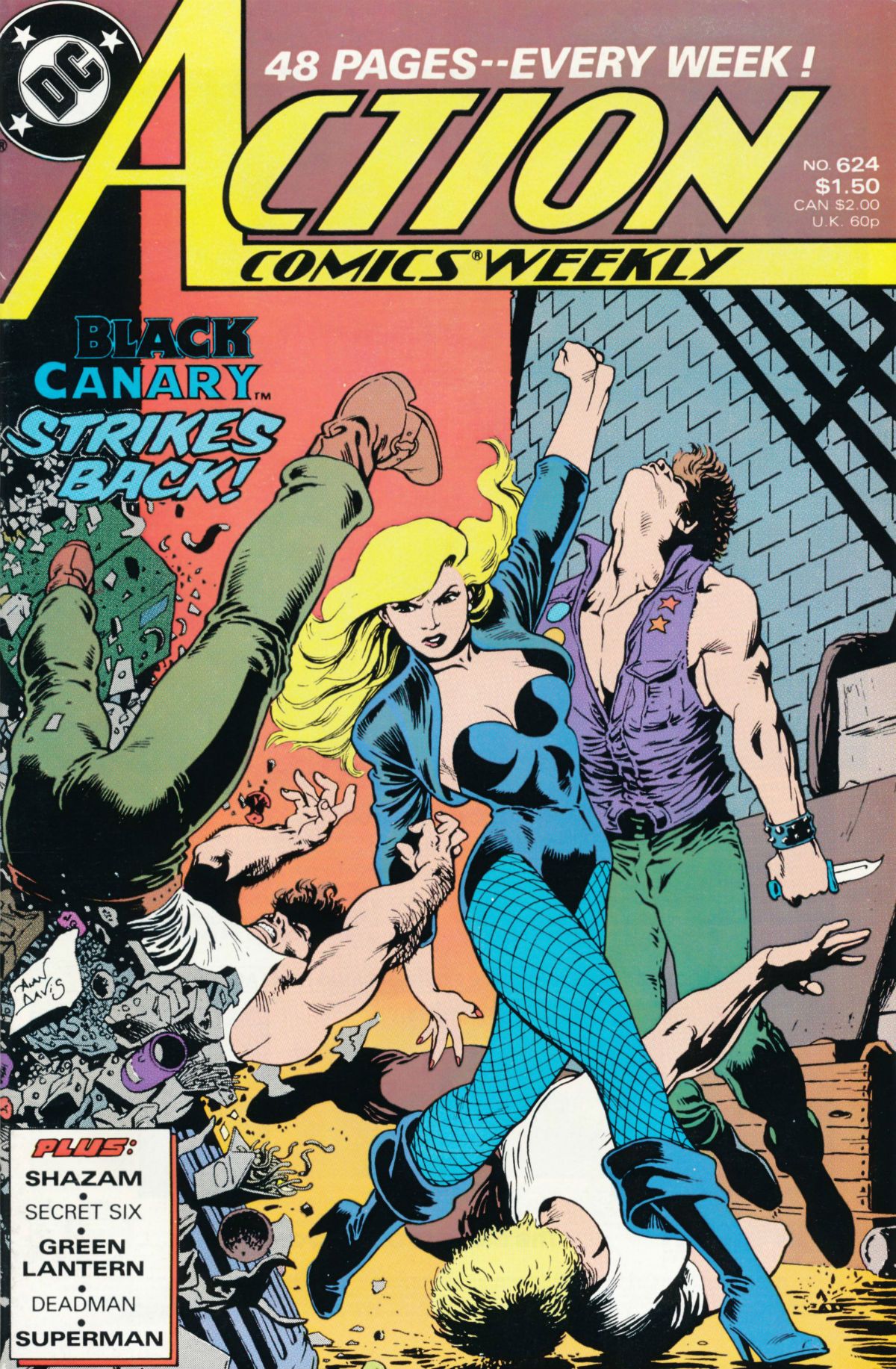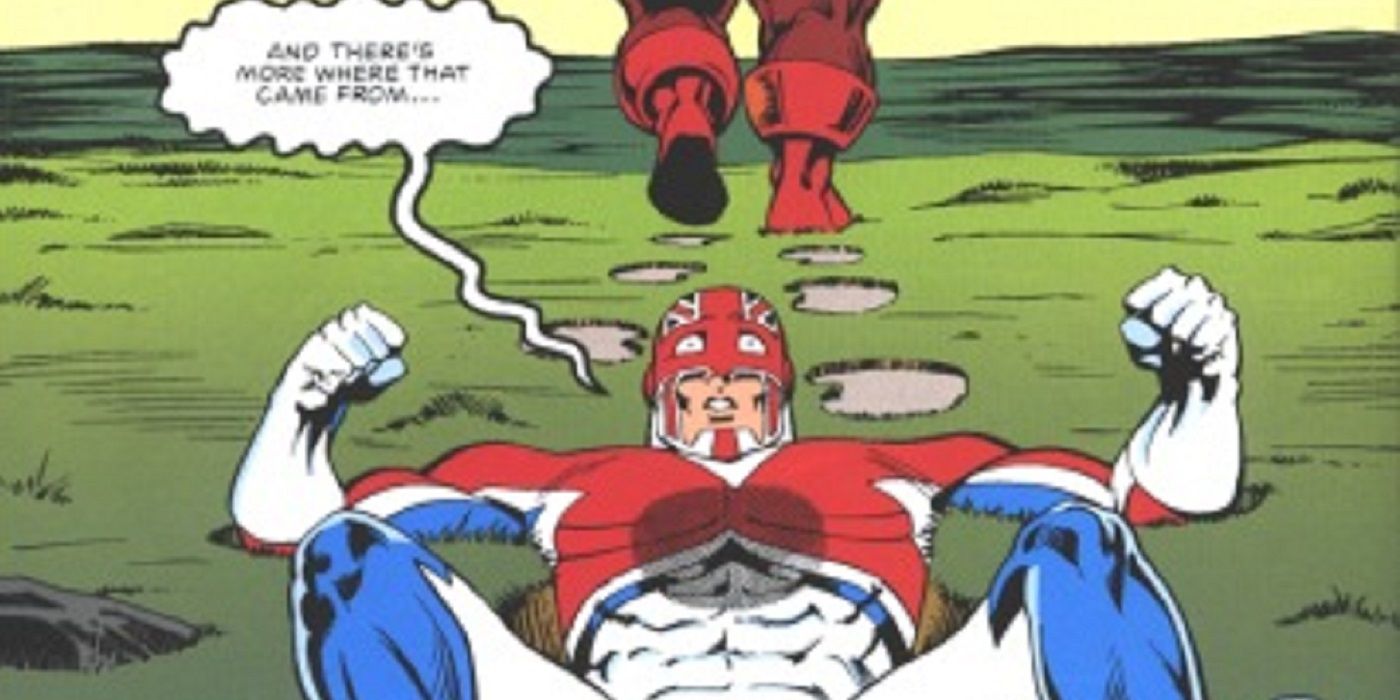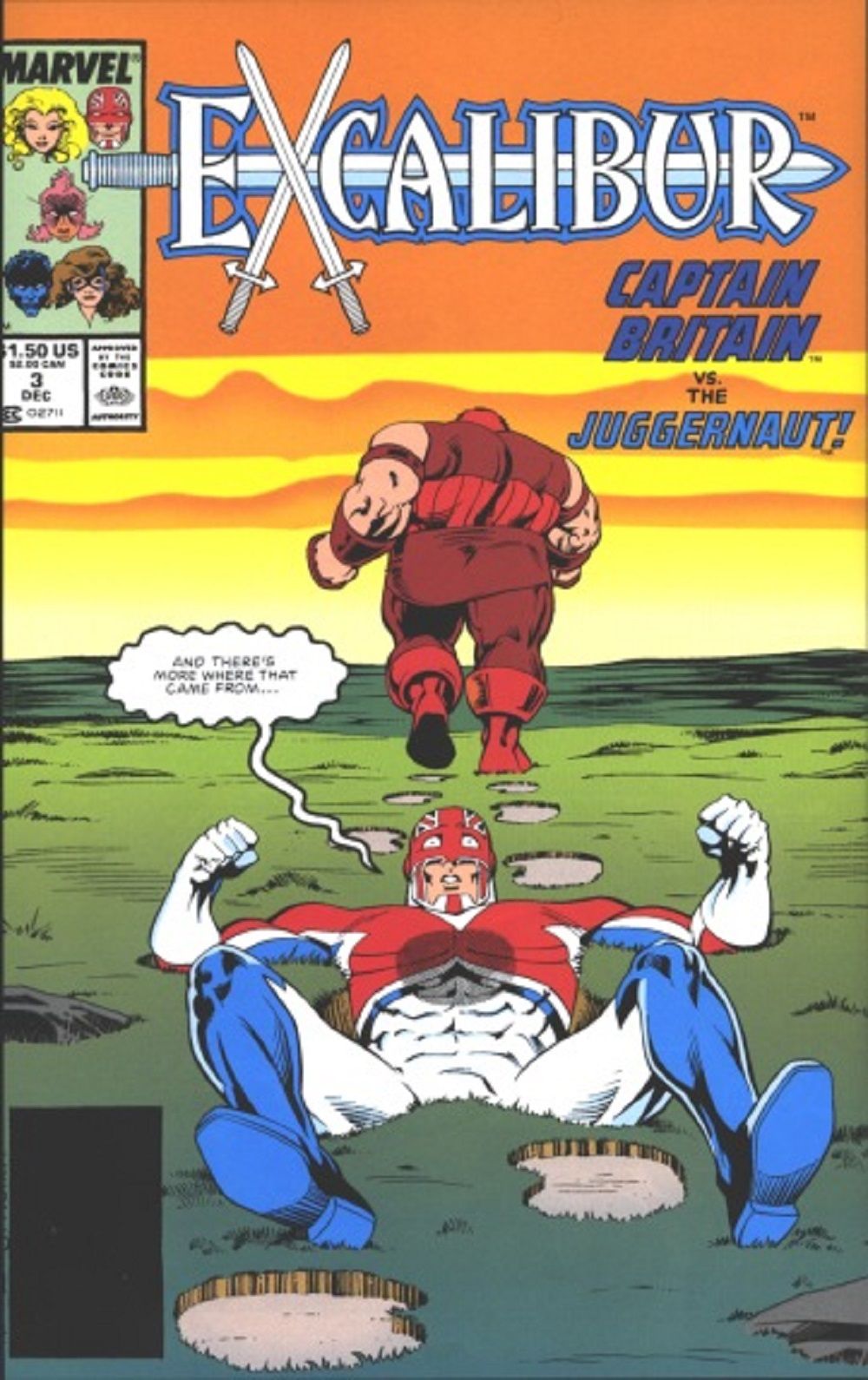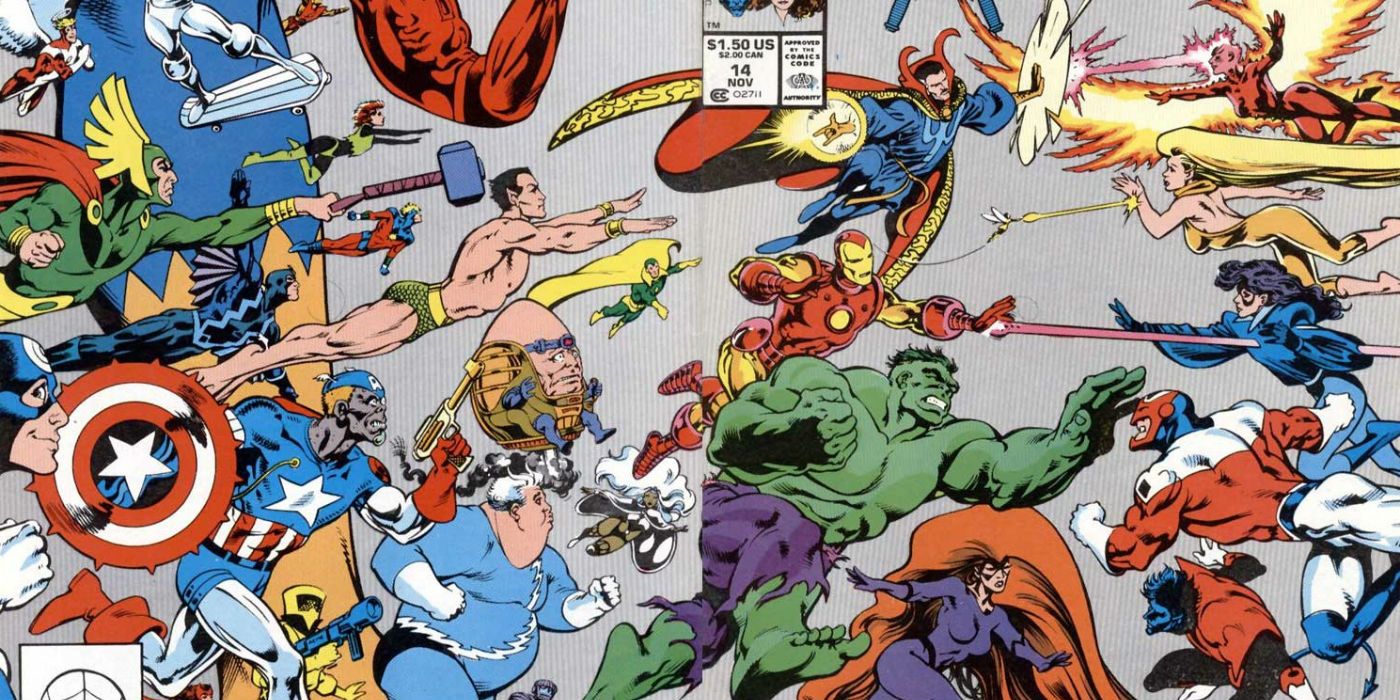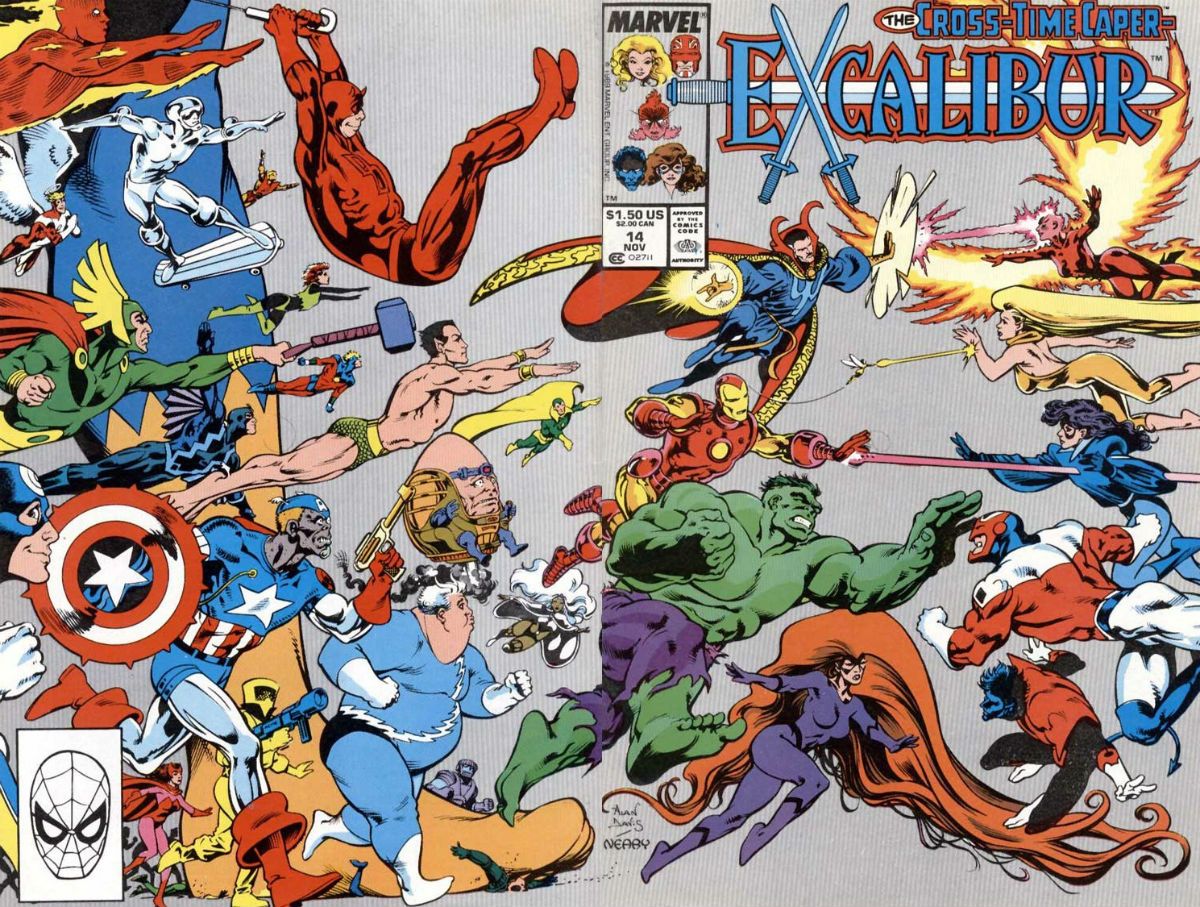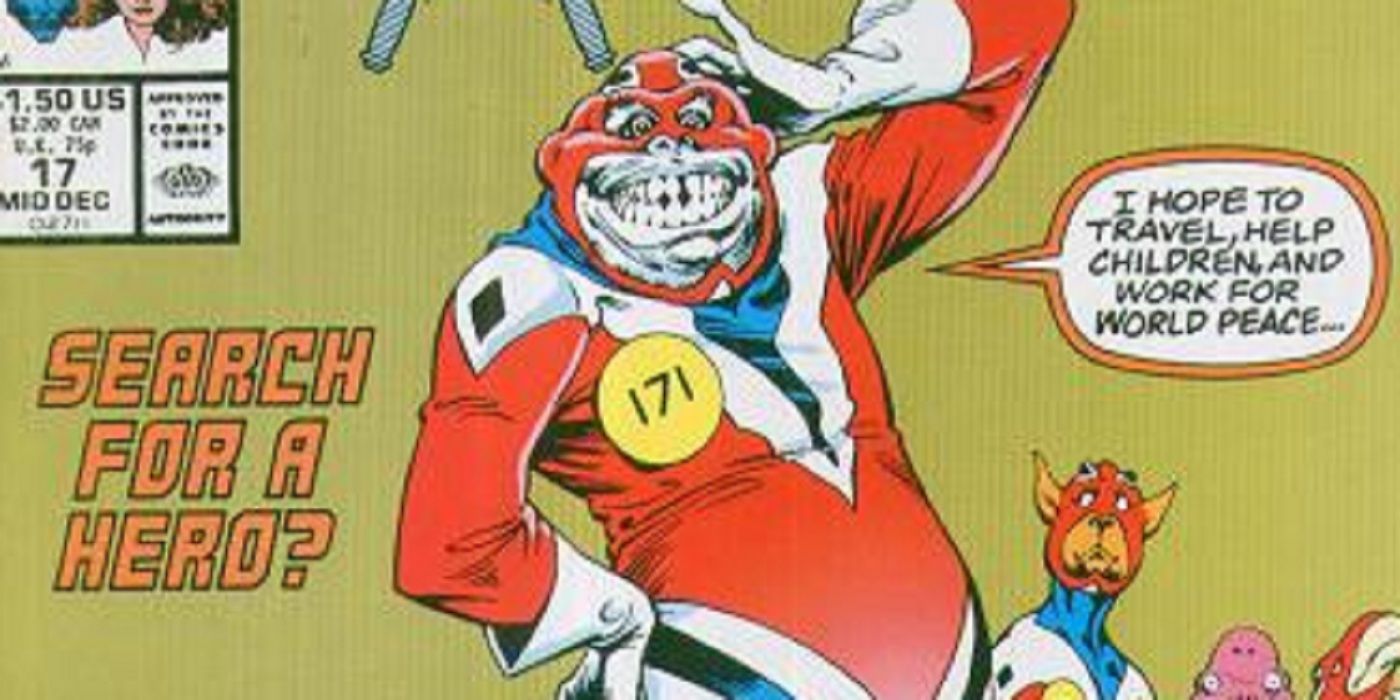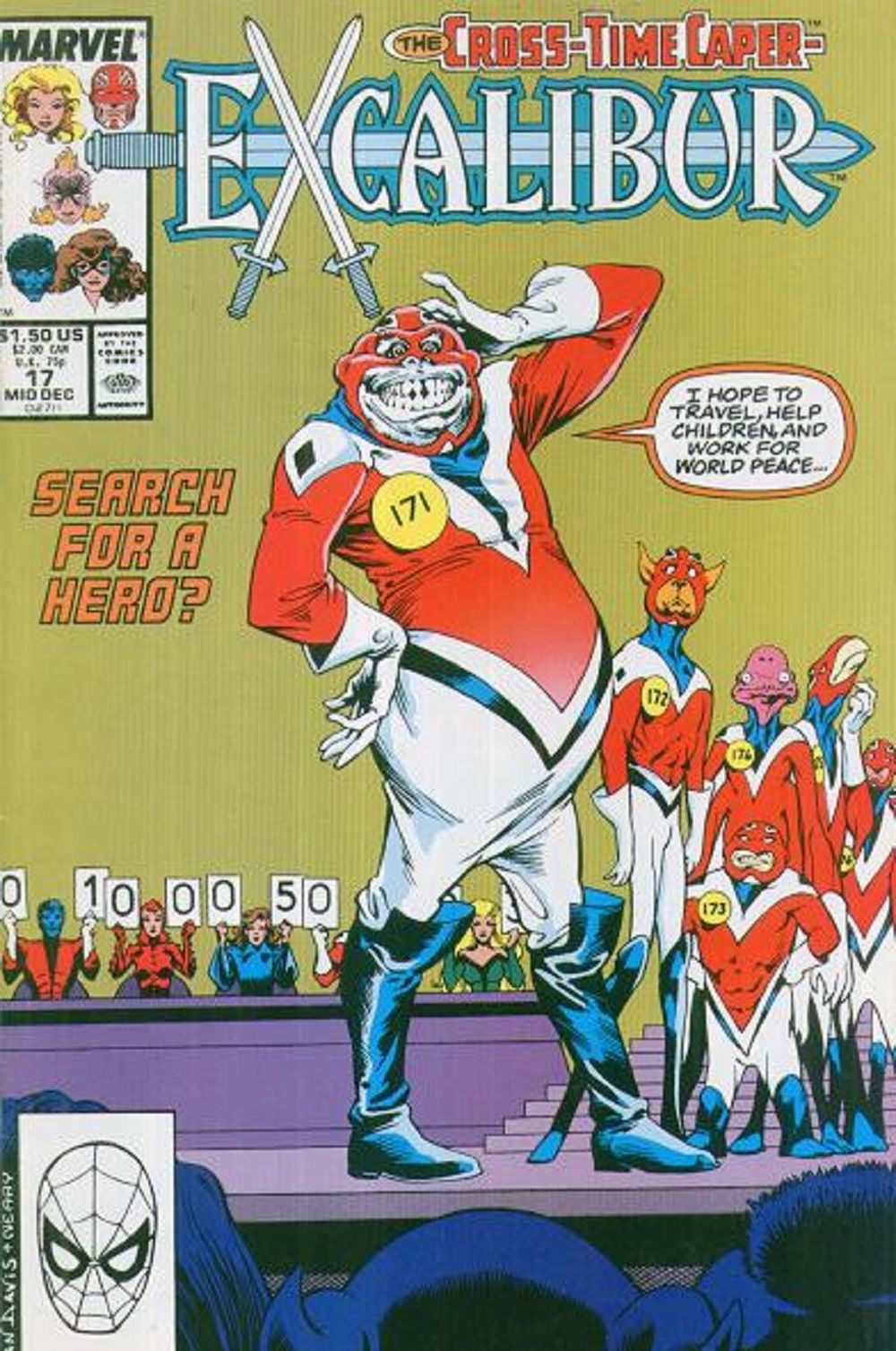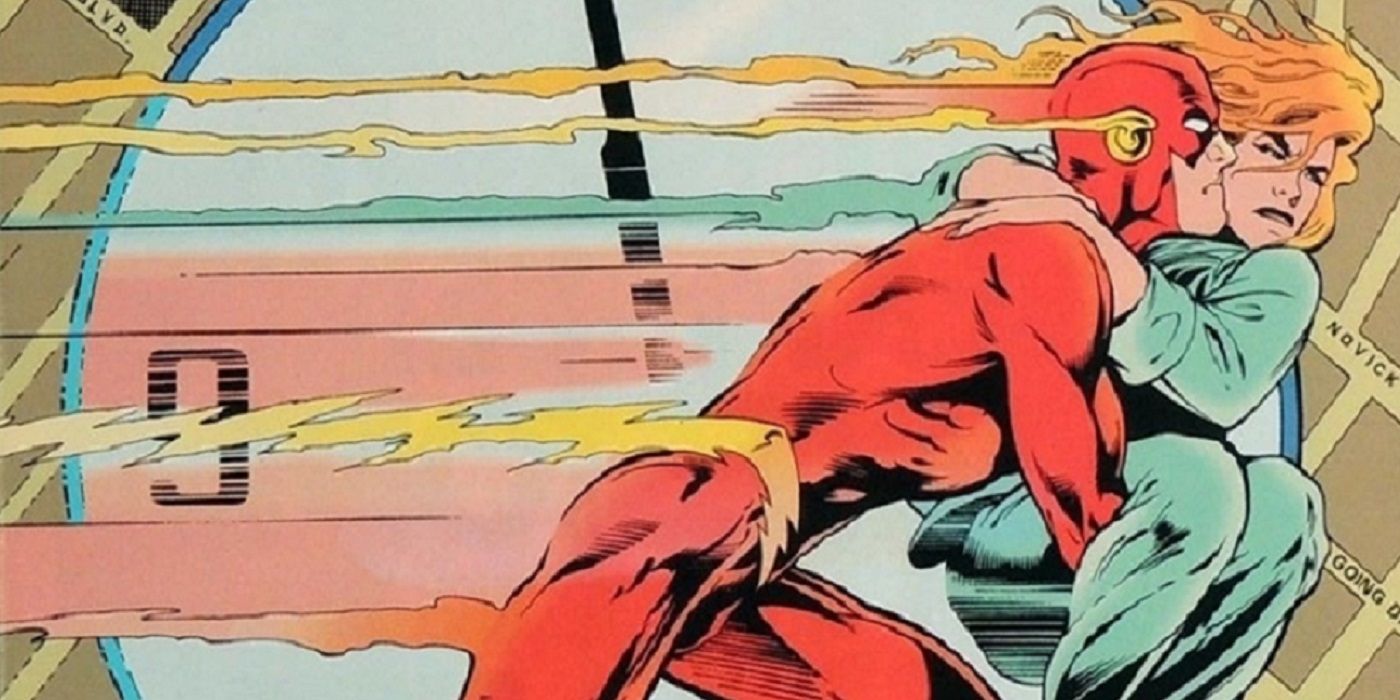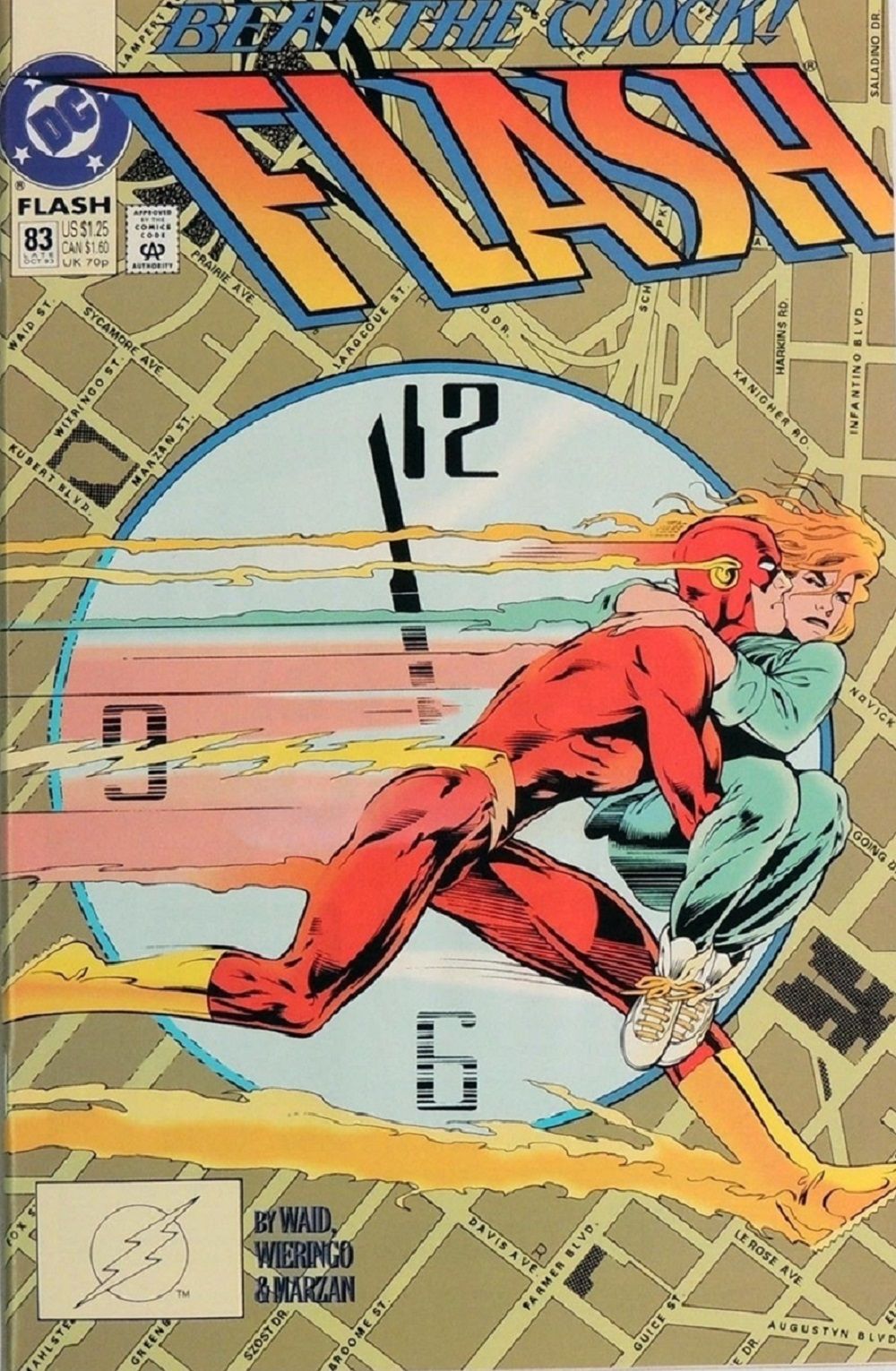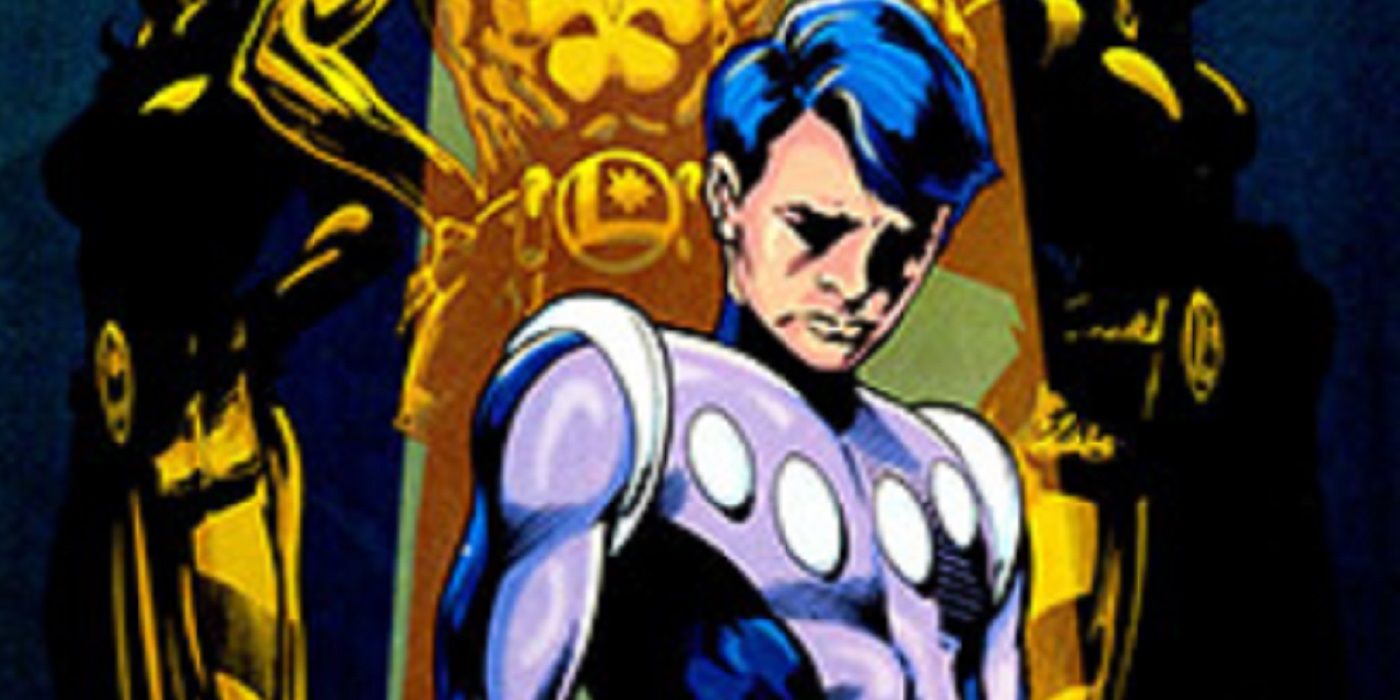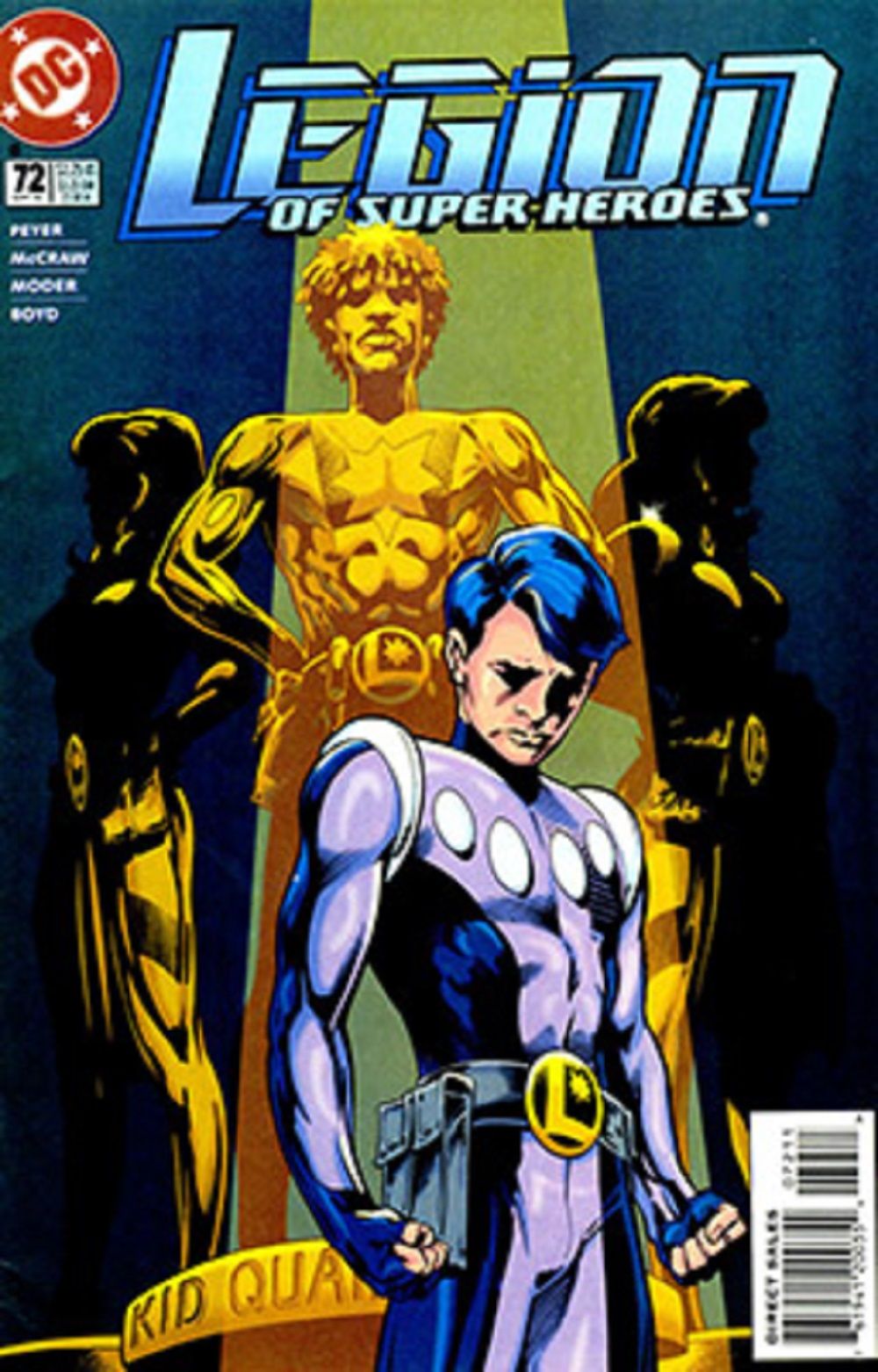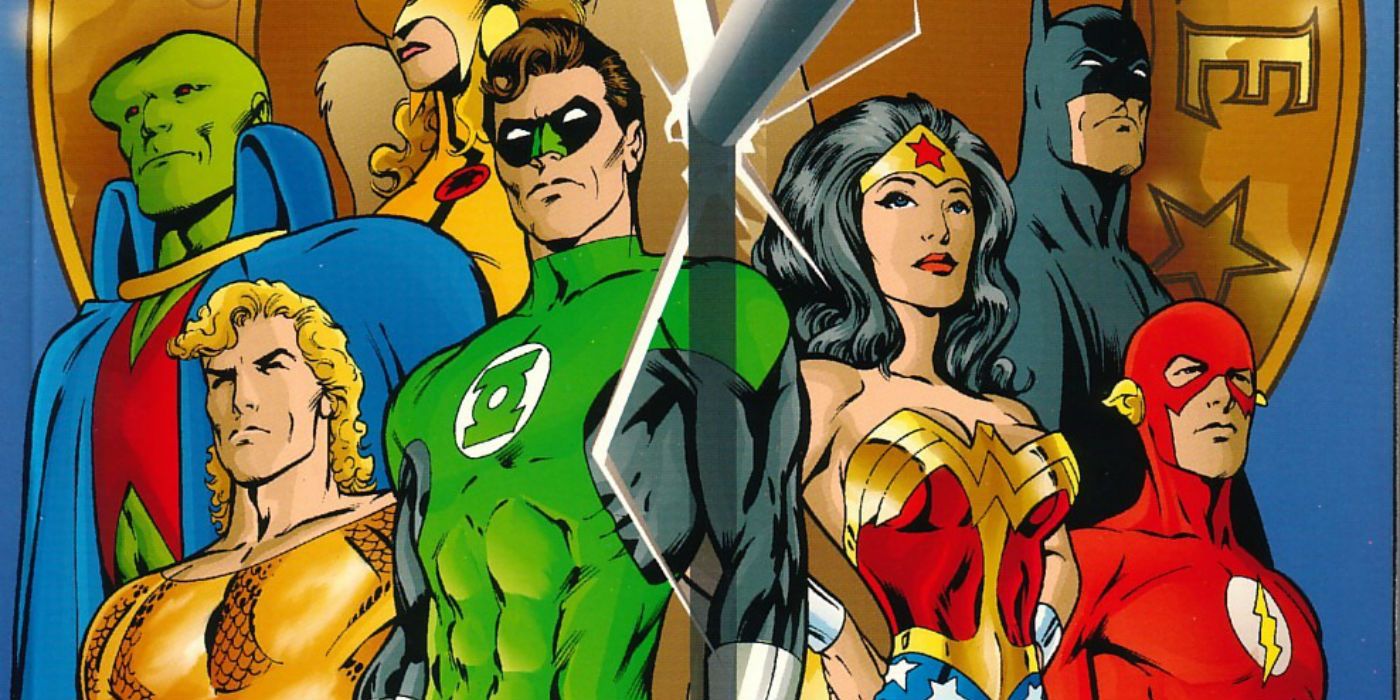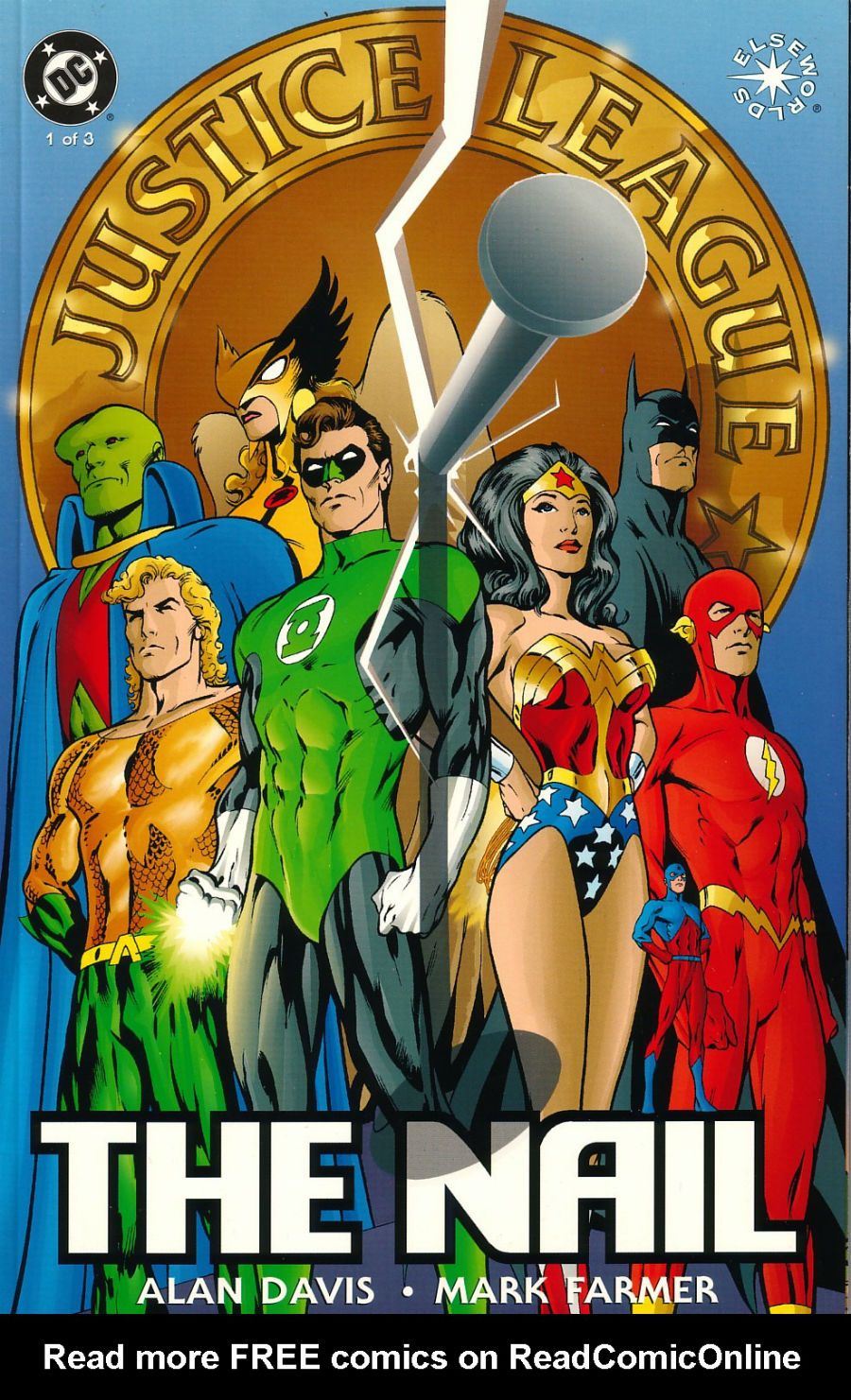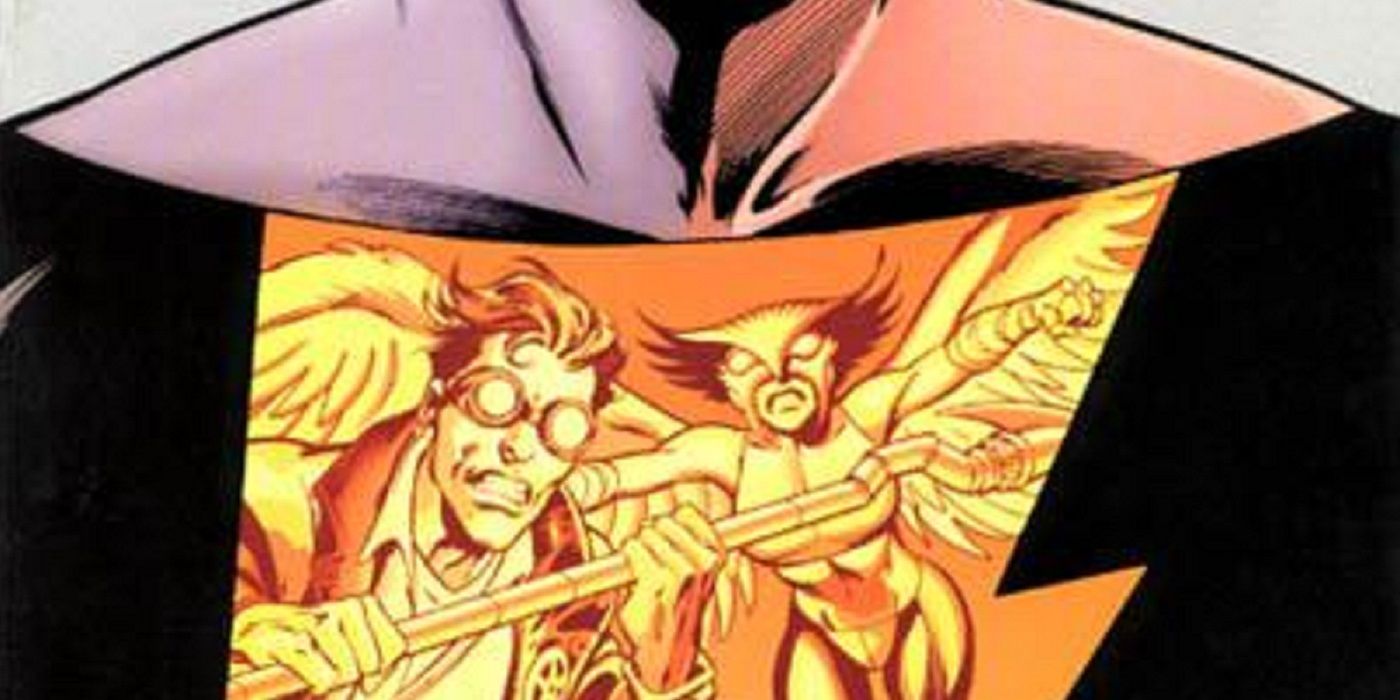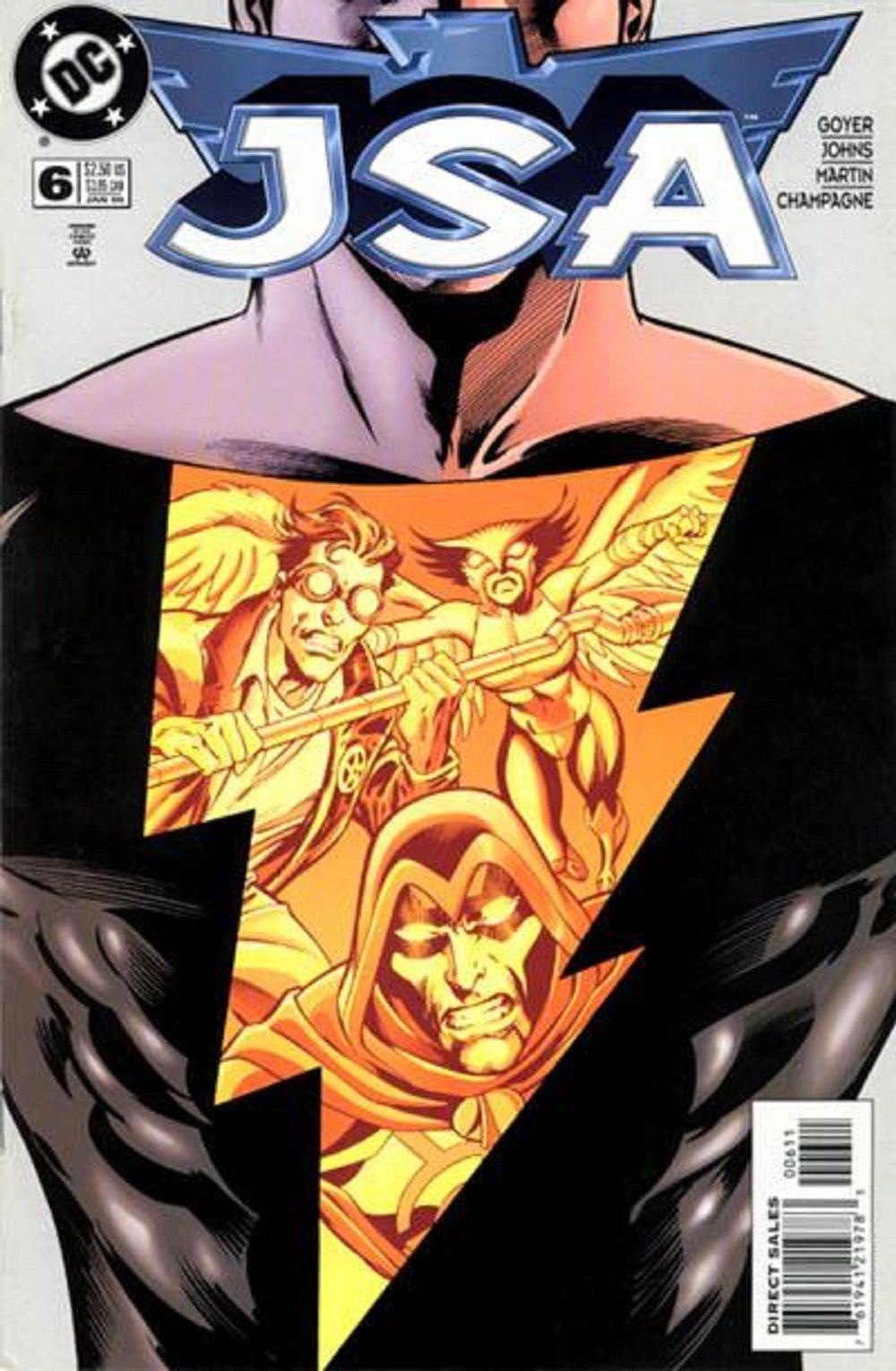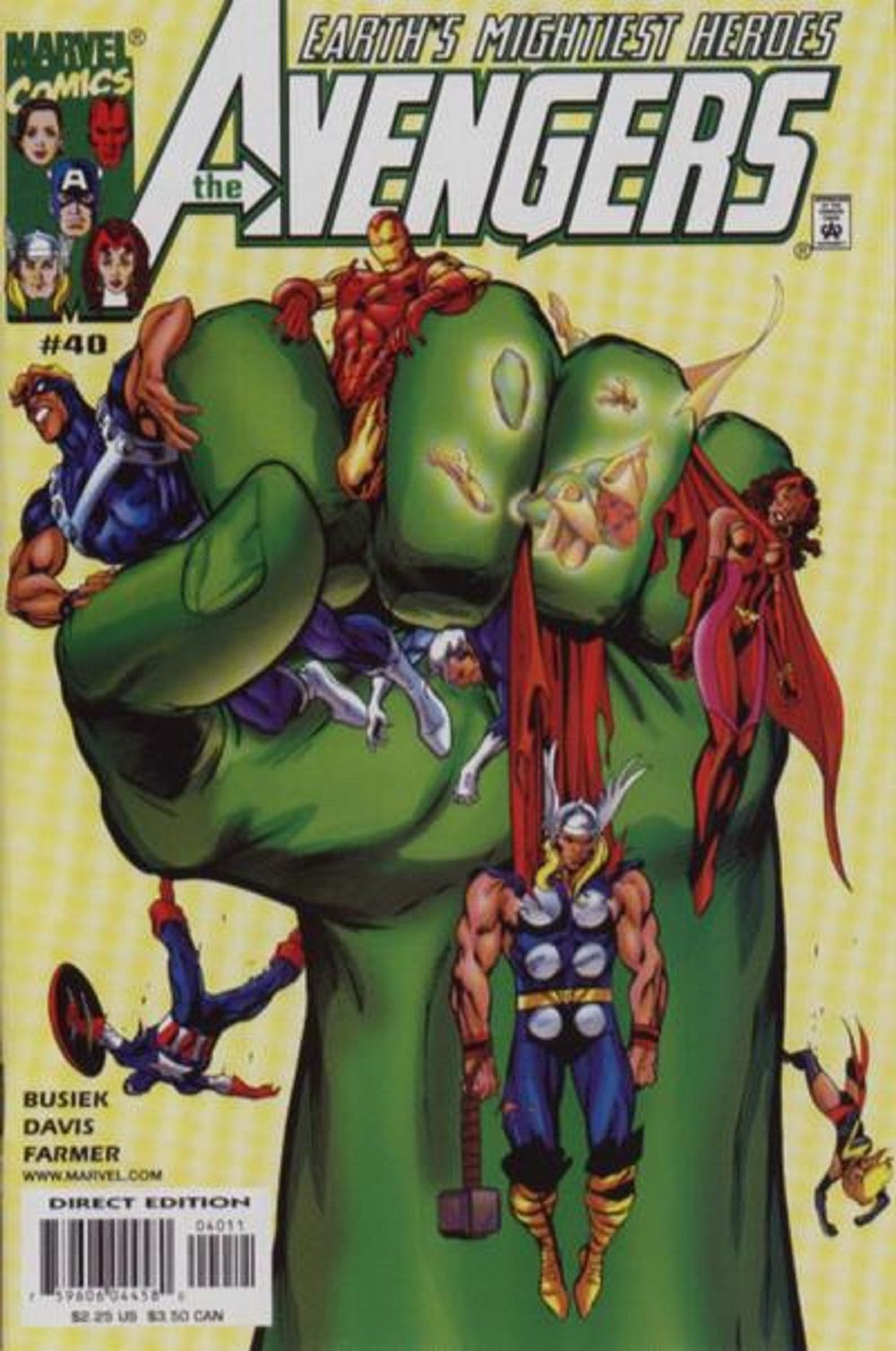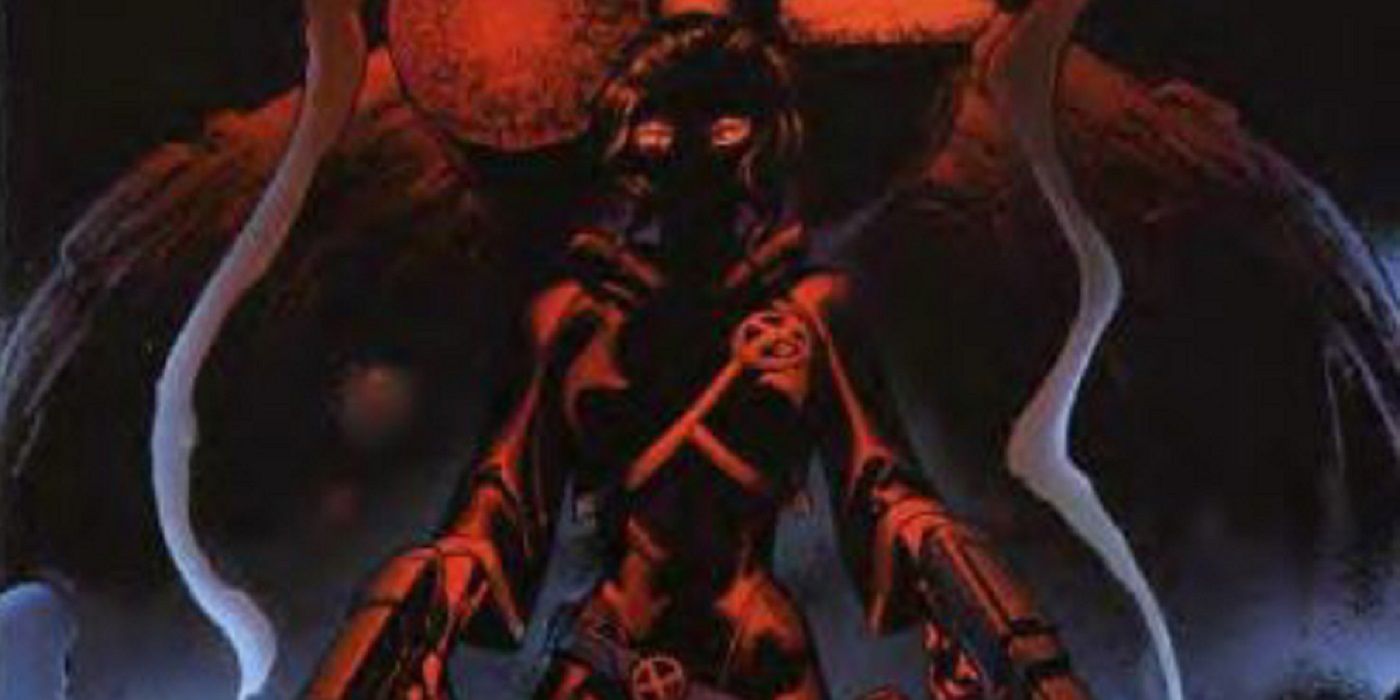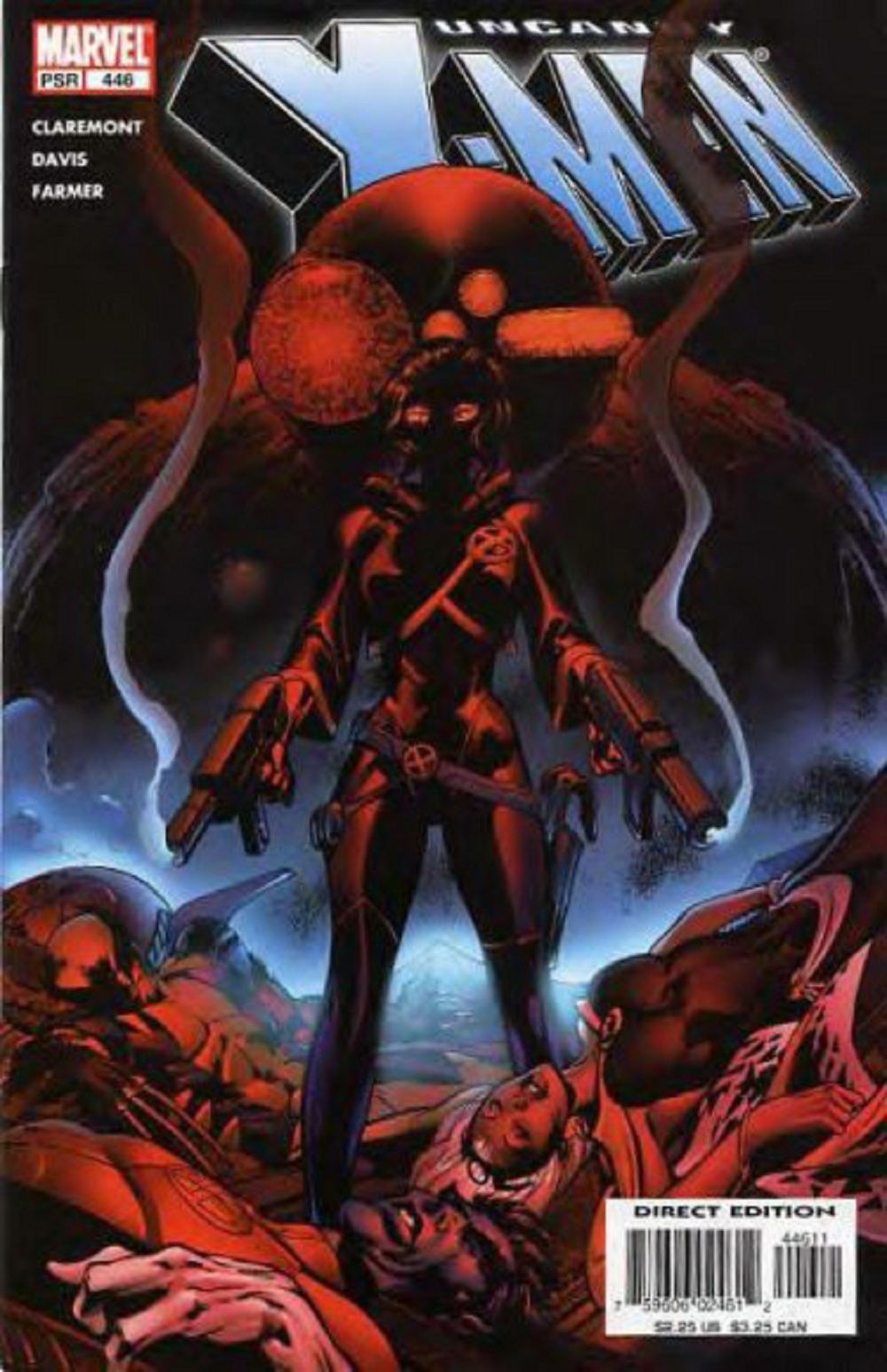Over the course of his career, Alan Davis has amassed a body of work to rival any top comics artist. Beginning his career with Marvel UK in the 1980s, Davis began drawing Captain Britain, including a celebrated run with Alan Moore. Work on stories for "2000AD" and "Warrior" followed, before he was hired by DC comics in 1985, increasing his profile stateside and exposing him to a whole new audience. Since this point, he's worked for both DC and Marvel and has worked on a veritable who's who of characters, both as writer and artist.
RELATED: The 15 Most Iconic Jim Lee Covers
While Davis has bafflingly never been acclaimed as a "hot" artist like some of his contemporaries, his body of work has been of consistently high quality. In recent years he's tended to write and draw his projects, leading to artistic successes such as "Clandestine," "JLA: The Nail" and "Excalibur." With Davis teaming up with Jim Starlin for the upcoming miniseries, "Guardians of the Galaxy: Mother Entropy" it seems a perfect time to look back over some of his greatest covers.
15 THE DAREDEVILS #11 (1983)
Alan Davis' work on the "Captain Britain" strip in this title saw him improving month after month, his work providing the perfect counterpart to Alan Moore's smart and thrilling script. Building on the work of previous writer Dave Thorpe, Moore crafted a reality-warping epic with a huge cast, including mad Jim Jaspers, the Special Executive and the unstoppable killing machine known as The Fury.
This issue's cover is notable for a number of reasons. Firstly, it highlights Davis' redesign of Captain Britain's uniform, replacing the original Herb Trimpe design. Secondly, it perfectly captures The Fury's cold menace, the lack of background helping to draw attention to its sleek, emotionless design. Captain Britain is drawn as if he is a rag-doll, a mere plaything for The Fury, with the monster's smoking gun implying the grisly fate that might soon befall him. It's a memorable image, with Mark Bagley often employing a similar effect with Spider-Man's costume, including on the cover to "Amazing Spider-Man" #394, a potential homage.
14 2000AD #450 (1985)
In typical "2000AD" fashion, the cover to prog 450 (despite being a festive issue) wasn't full of Christmas cheer. Instead, the wraparound cover saw D.R and Quinch mixing up their holidays, employing a version of trick or treat in order to steal goodies from innocent children. This was just the kind of despicable behavior that the two miscreants were known for, and Davis -- in collaboration with Alan Moore -- was instrumental in bringing them to life.
D.R. (Diminished Responsibility) and Quinch were two delinquent alien students, who had an infinite capacity for destruction and anarchy. They appeared in a series of strips from Moore and Davis and a number of problem-page style features from Jamie Delano and Davis. Alan Moore was reportedly uneasy with the way the strip portrayed violence for comic effect, but that's the image that this cover captures so brilliantly. D.R and Quinch may be ethically dubious delinquents, but from Davis' cover, it's clear to see that they can throw one heck of a party.
13 BATMAN AND THE OUTSIDERS #32 (1986)
"Batman and the Outsiders" was the comic that gave Davis his big break in the American comics field. Taking over from Jim Aparo with #22, he stayed with the title until its final issue at #36, with Batman's departure from the team. This was a pivotal moment for the group, with the team initially being formed by Batman after he left the Justice League. The team had been shaped in his image, with many of the members being new heroes that Batman had helped train. As a result, Batman leaving the team was a huge event, something that this cover perfectly captures.
The layout and figure work on this cover is very impressive. Is there also a touch of symbolism? The team forging their own path and stepping out from Batman's shadow? As usual, Bats is trying to show no emotion, but the reactions of the other six members are all well-captured, including the irritation of Geo-Force, the distress of Halo and the disappointed resignation of Metamorpho and Black Lightning.
12 UNCANNY X-MEN #213 (1987)
Alan Davis certainly picked a landmark issue to make his introduction to Marvel US and their many mutants. This was the final chapter of the "Mutant Massacre" storyline and also the issue where Psylocke formally joined the team, Betsy being a familiar character to Davis from his run on "Captain Britain." The issue also featured a no-holds-barred confrontation between Wolverine and Sabretooth, with neither character holding back. As the cover suggests, both men are out for blood.
The battle is the main action sequence in the book and it therefore makes sense that it's also the focal point of the cover. What's clever is that Davis zooms right in on the combatants, letting the readers see the whites of their eyes (literally in the case of Creed). It's abundantly clear that the conflict is personal and that there's more at stake here than a simple conflict between two teams. It would be a long, torturous road before the real relationship between Logan and Creed would be revealed, but this cover made it clear from the start that there was a lifetime of bad blood between the two.
11 DETECTIVE COMICS #575 (1987)
After his departure from "Batman and the Outsiders," Davis became the regular artist on "Detective Comics," maintaining his relationship with the Bat corner of the DCU. Unfortunately, his run was cut short, with #575 -- the first part of the "Batman: Year 2" story arc -- proving to be his final issue. It's an eye-catching, intriguing image with which to make his departure. Batman, a character known for being resolutely opposed to the use of guns, looks entirely comfortable in possession of a handgun, his gloved finger wrapped around the trigger.
Despite Joe Chill's gun being the focal point of this cover, it wasn't drawn by Davis and proved to be the final factor that encouraged him to make the switch from DC to Marvel. The type of gun drawn by Davis in his cover and throughout the story was not the same as that which appeared in a small flashback sequence in "Batman" #404, a story that was due to be published some time before that by Davis. DC refused his request to amend the small number of panels in that issue, leading to Davis quitting DC for Marvel and Dick Giordano stepping in to make the changes.
10 ACTION COMICS #624 (1988)
"Action Comics" is widely known as the title that contained the debut of Superman, but in the years after this event it went through a number of changes in content and style. From #584 in 1987, it became a team-up title, while for a 10-month period between 1988 and 1989, it became a weekly anthology title, often starring lesser-known or underused DC characters. One such character was Black Canary, the focus of Davis' cover for #624.
Dinah had recently been featured as a member of the JLI, but her appearances in this title saw her in a redesigned costume, losing the bulky bird motif and bandanna and seeing the return of her famous fishnet stockings. What's great about this cover is that it clearly shows Dinah's skills as a fighter, highlighting that she is far more than her ultrasonic scream. Davis makes these street toughs look mean and armed, yet it's apparent that Dinah is having no difficulty dealing with them.
9 EXCALIBUR #3 (1988)
When Davis teamed up with Chris Claremont to launch "Excalibur," following the adventures of the British-based (mostly) mutant team, he was reunited with Captain Britain. The Brian Braddock in early issues of this series was a tortured, insecure character whose portrayal caused some controversy among fans. The Captain was often shown as thinking with his fists, preferring to punch his way towards the resolution of a conflict. This often led him and the team into trouble, with the cover to #3 being a perfect example of a time when strength wasn't enough.
One of the most enjoyable things about "Excalibur" was that, at a time when "Uncanny X-Men" was becoming increasingly dark and dour, it had a lightness of touch and wasn't afraid to gently mock its characters. In this cover, we see the unstoppable Juggernaut living up to his reputation. Faced with Captain Britain, he has simply kept going, leaving the Captain trampled on the ground. It's a great visual gag, with the Juggernaut's footprints (including one on the Captain's chest) and the Captain's delirious statement of defiance combining well.
8 EXCALIBUR #14 (1989)
The multi-part story, "The Cross-Time Caper," saw the members of Excalibur bouncing between realities, being confronted with a variety of strange worlds. Many of these issues saw the humor in the book pushed to the fore, allowing Davis to draw sword and sorcery, westerns, horror and other scenarios. In this issue, the team arrived on an Earth similar to their own, but with one glaring exception. The absurdity of the superhero genre had been pushed to the max, with the familiar heroes on this world being exceedingly silly.
The beautiful wraparound cover by Davis for this issue features Excalibur facing off against a variety of well-known Marvel heroes. While the front cover suggests a typical comic, with normal versions of the Hulk, Iron Man, Dr Strange and others, it's on the back cover where the fun really begins. A fat Quicksilver... a Loki with the power of Thor... a cyborg Captain America -- who could resist purchasing the comic to find out more? Davis would later homage his own work on the wraparound cover to X-Men/Clandestine #2.
7 EXCALIBUR #17 (1990)
This issue marked the end of Davis' stint as the regular artist on his first "Excalibur" stint. Fittingly, it showcased many of the same qualities that had marked his run on the book, including a clever central concept, a dash of humor and -- of course -- a wonderful drawing. The setup for the cover was that, having defeated the evil Anjulie, Excalibur were attempting to find a suitable champion that would continue to protect the land after their departure. As can be seen on the cover, it's not only X-Factor contestants that have delusions of grandeur.
The cover highlights that there are no shortage of volunteers to fill the position. Beings of every size, shape and color flaunt their attributes, with Davis even slipping a Warwolf into the lineup. The concept of a superheroic Miss Universe concept is a fun one and is magnified by the speech bubble of the primary Captain Britain wannabe. Thankfully, Davis didn't take this homage to its natural conclusion, thereby sparing readers the sight of a swimsuit round.
6 THE FLASH #83 (1993)
While Alan Davis didn't produce many full books for DC in the early '90s, he was regularly providing covers for a range of titles, one of which was "The Flash," during the run by Mark Waid and Mike Wieringo. He proved a perfect fit for the book; while Wieringo produced some great work during his tenure, it's a shame that Davis never had a stint as regular artist, his style being a good fit for the Flash's world.
The concept of #83 is that Wally has to race against the clock in order to find a multi megaton bomb, hidden somewhere in Keystone City. He only has 10 minutes to scour the entire city, meaning that even the fastest man alive (sorry, Superman... deal with it) has to call upon some help. The clock motif and the city grid on the cover capture this intensity, but what takes it to the next level are the street names. As well as the name of the issue's creative team, including "Davis Ave" and "Farmer Blvd," the map is littered with references to creators who have previously worked on "The Flash," such as "Infantino Blvd" and "Guice St."
5 LEGION OF SUPERHEROES #72 (1995)
One of Alan Davis' longest stints on a title was his time as cover artist for the "Legion of Superheroes," which lasted from 1995-2000. #72 was only a few issues into Davis' run, but he was already showing his mastery of the characters contained within. At this point in Legion history, the team were at a low ebb. They had just lost two members, Andromeda and Apparition, and the remaining members of the team were struggling to come to terms with the loss. Denial, anger, grief, helplessness -- all these feelings are on display, and as the team's leader, Cosmic Boy has the unenviable task of trying to hold the team together. The burden of leadership is especially heavy at this time, and this really comes through on Davis' cover.
What's often forgotten about the members of the Legion is just how young the majority of them are, which is why Alan Davis was such an inspired choice of cover artist. While he can draw superheroes with the best of them, he rarely goes in for the overly muscled look. His characters are real people and Cosmic Boy, as he stand among the statues of fallen members, looks every inch a boy in emotional pain.
4 JLA: THE NAIL #1 (1998)
Throughout the '90s, DC churned out numerous Elseworlds books that featured familiar heroes in different times and places. While the quality of these books varied, "JLA: The Nail" is a high-water mark for the line, as well as for Alan Davis. The three issue series starts from a simple premise: what if the Kents had not found Superman? (the nail of the title causing a flat tyre for the Kents' truck, preventing them from retrieving Kal from the wreckage). Davis explores how the absence of Superman affects Metropolis and his supporting cast, as well as what it means for his fellow heroes in the JLA. It's an intriguing premise, an enjoyable story and is beautifully illustrated.
The cover to #1 at first seems like a typical shot of the JLA, although Superman is conspicuous by his absence. What's impressive is that in one image, Davis manages to convey the essence of each of these characters, including the alien empathy of the Martian Manhunter, the self-confidence of Hal Jordan, the nobility of Diana and the runner's physique of the Flash.
3 JSA #6 (2000)
James Robinson, David S. Goyer and Stephen Sadowski relaunched the JSA in 1999, combining new versions of legacy heroes with established members of the team. Also along for the ride was Alan Davis, who contributed covers to the early issues of the title. No stranger to drawing large groups and with his artwork being a good fit for the tone of this new book, it was another fitting assignment. The early issues of the title were something of a slow-build, (re)establishing the characters and concept and their mission statement. In "JLA" #6, the new team faced a real test of their abilities when they were confronted with the raw power of Black Adam.
Adam had recently been reintroduced in "The Power of Shazam" and his appearance in this issue would mark the beginning of a long association with the JSA. Adam has a simple yet instantly recognizable costume and this cover makes full use of that, the worried faces of team members reflected in his lightning bolt insignia.
2 AVENGERS #40 (2001)
After George Perez finished his run on "The Avengers" with #34, the hunt was on to find a replacement for such a legendary figure. After a series of brief fill-in issues, Alan Davis joined Kurt Busiek for a 6-issue arc (#37-42) that saw the Avengers dealing with the inhabitants of a Greek village who had been transformed into Hulk-like creatures. Davis had previously penciled the "Fantastic Four" and various X-books, but this was his first time in the Avengers corner of the Marvel universe. Unsurprisingly, he made it seem easy, rendering Avengers new and old as if he'd been drawing them for years.
The cover to #40 shows the threat that the Hulks pose to the Avengers by portraying them as helpless within the grip of a immense green hand. Goliath, Scarlet Witch and Iron Man are among the heroes to be ensnared and even Thor has been subdued, hanging motionless in the air, suspended by his cape. As a demonstration of the power that the Avengers were up against, it's an impressive visual.
1 UNCANNY X-MEN #446 (2004)
When the X-books were rejigged after Grant Morrison's departure from "New X-Men" in 2004, a familiar creative team took over "Uncanny X-Men." Chris Claremont and Alan Davis had enjoyed a fruitful partnership on "Excalibur" and now had a chance to work their magic on a core X-title. The line-up for the book's team featured a number of characters that Davis was very familiar with, including Rachel Grey and Nightcrawler. A more surprising return was the adversary that the team faced -- the destructive power of The Fury.
The story itself caused some controversy for its treatment of The Fury, with some readers believing that it was not the threat it was originally established as. However, this cover undeniably has an air of menace that works to covey the creature's threat. The Fury is using Sage as a puppet, forcing her to fight her friends. The somber colors on the cover and the smoke rising from the recently discharged weapons all suggest that something terrible has happened here, with it being clear that this mute killer is the puppet master.
Let us know your thoughts on our picks! We'd love to hear your suggestions, too, either on this list or on the Facebook comments thread!

